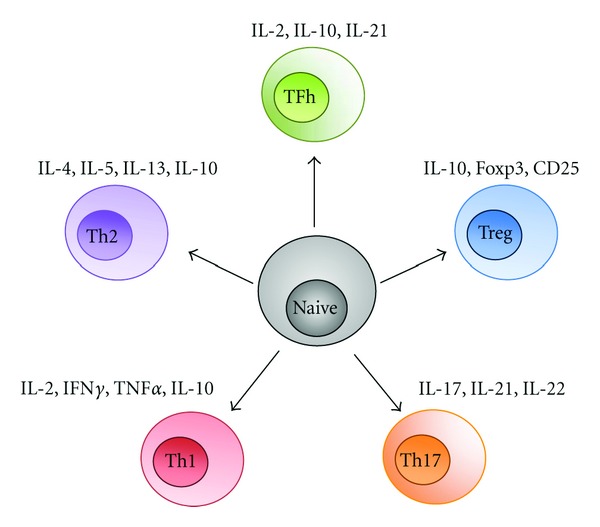Figure 1.

CD4+ T Cells differentiated into subsets. CD4+ T cells can differentiate into different subtypes based on the factors within the inflammatory milieu with which T cells come into contact. TH1+ cells secrete IFN-γ and tumor necrosis factor (TNF) and mediate the pathology in experimental autoimmune encephalomyelitis (EAE). Many of the results previously attributed to TH1 cells are actually mediated by Th17+ cells. Th17+ cells secrete IL17, IL21, and IL22. These cells have been identified in MS lesions, where they may serve as important effectors. As a result of TGF-β stimulation, CD4+ T cells develop into T-regulatory cells. These cells downregulate the immune response and express FOXP3, CD25, and IL10. The mechanism of suppression is by the secretion of factors such as IL10. TH-helper cells provide help to other T cells, such as CD8+ T cells or B cells. Th-helper cells secrete IL2, IL10, and IL21. Th2+ cells downregulate the immune response and are associated with recovery from acute attacks in EAE and, possibly, MS. The cytokines that mediate the downregulation of the immune response are IL4 and IL10, in addition to IL13 and IL5.
